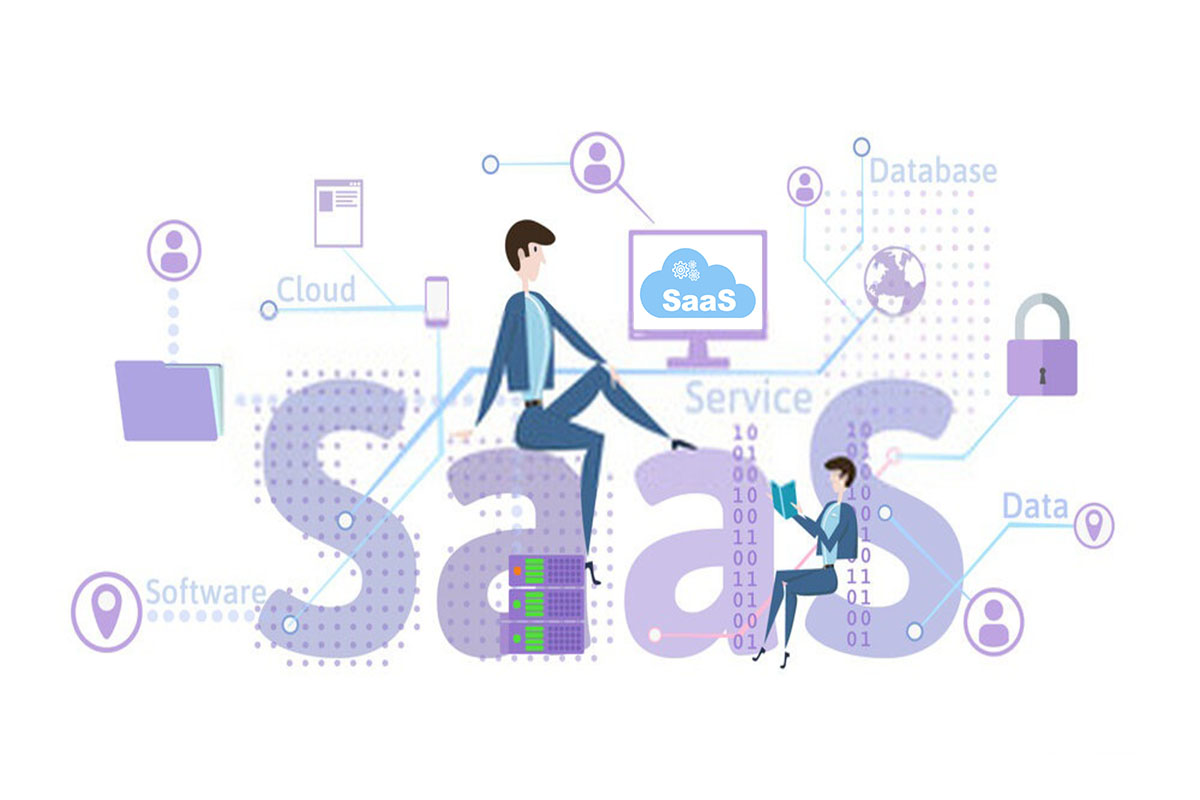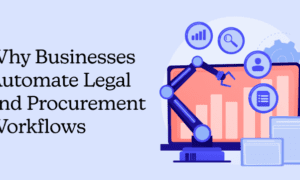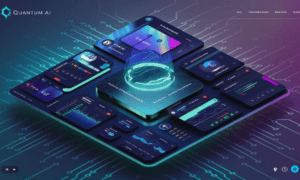In the fast-paced world of SaaS, marketing strategies are crucial for growth. SaaS businesses face unique challenges that require tailored approaches. Unlike traditional products, SaaS offerings are intangible and subscription-based.
This means marketing must focus on customer acquisition and retention. A well-crafted SaaS marketing strategy can drive growth and enhance brand visibility. It involves understanding your audience and choosing the right channels.
SaaS marketing channels vary widely, from content marketing to social media. Each channel offers distinct advantages and requires specific tactics. Setting clear SaaS marketing goals is essential for guiding your strategy.
These goals should align with overall business objectives. A comprehensive marketing funnel is vital for nurturing leads through awareness, consideration, and decision stages. SaaS content marketing plays a key role in building authority and driving traffic.
Effective content can differentiate your brand in a competitive market. B2B SaaS lead generation is another critical component. It involves strategies to attract and convert potential customers.
Utilizing B2B SaaS metrics helps measure success and make data-driven decisions. This guide will explore these elements and more. By the end, you’ll have actionable insights to optimize your SaaS Marketing Strategy for growth.
Understanding SaaS Marketing: Unique Challenges and Opportunities
SaaS marketing presents a mix of challenges and opportunities. Unlike traditional marketing, SaaS focuses on ongoing customer relationships.
With subscription models, recurring revenue is crucial. This necessitates continual engagement and high customer satisfaction to minimize churn. The intangible nature of SaaS products poses additional marketing hurdles.
Prospects cannot physically interact with the product. Therefore, marketers must emphasize digital experiences like demos or trials. SaaS also requires frequent updates and communication.
Product improvements should be highlighted in your marketing materials to showcase value. Opportunities in SaaS marketing stem from its digital foundation. This allows for precise targeting and personalization.
Marketers can track user behavior and tailor content accordingly. This is particularly valuable for building long-term customer loyalty. Social media and digital platforms offer multiple SaaS marketing channels to explore.
- Content Marketing: Builds authority and educates potential customers.
- Email Marketing: Engages customers with personalized messages.
- SEO: Drives organic traffic to your site.
These channels offer numerous ways to connect with audiences. Moreover, the subscription model creates opportunities for upselling. Marketers can focus on expanding existing accounts rather than solely acquiring new ones.
Finally, innovation in digital marketing tools enhances SaaS strategy. Automation and AI can optimize processes, saving time and resources. Therefore, understanding these unique elements can lead to a robust SaaS marketing strategy tailored for growth. By leveraging both the challenges and opportunities, SaaS companies can thrive in a competitive landscape.
Setting SaaS Marketing Goals and KPIs
Defining clear SaaS marketing goals sets the foundation for success. Goals provide direction and help measure progress effectively. Align these goals with overall business objectives for best results.
KPIs, or Key Performance Indicators, play a vital role. They quantify progress towards achieving those goals. Choose KPIs that align with your specific SaaS marketing strategy.
Focus on metrics that drive growth and customer engagement. Here are some examples of relevant KPIs:
- Customer Acquisition Cost (CAC)
- Monthly Recurring Revenue (MRR)
- Churn Rate
- Customer Lifetime Value (LTV)
- Conversion Rates
Each KPI offers insights into different facets of your marketing performance. For instance, CAC informs you about the efficiency of your customer acquisition efforts. Meanwhile, MRR and LTV highlight revenue growth over time.
Regular evaluation of these KPIs enables agile adjustments. This flexibility is crucial in responding to changing market conditions. Additionally, it helps in fine-tuning marketing efforts for better outcomes.
Incorporating KPIs into your strategy also strengthens accountability. Teams know what success looks like and can work towards measurable outcomes. This shared understanding fosters collaboration across departments.
Ultimately, setting thoughtful goals and KPIs can significantly impact SaaS marketing efforts. They guide decision-making processes and ensure resources focus on high-impact activities. With this approach, your marketing strategy will drive sustained growth and profitability.
Identifying and Segmenting Your Target Audience
Knowing your target audience is crucial for any SaaS marketing strategy. Begin by conducting comprehensive market research to identify potential customers. This research should focus on demographics, preferences, and behaviors.
Understanding your audience enables precise marketing efforts. Once you gather data, segmentation becomes the next step. Segmentation involves categorizing your audience into distinct groups. Each group shares similar characteristics or needs.
Effective segmentation can be based on various criteria:
- Demographics (age, gender, income)
- Firmographics (industry, company size)
- Behavior (purchase history, usage patterns)
- Psychographics (interests, values)
After segmentation, craft tailored marketing messages for each group. Personalized communication enhances engagement and boosts conversion rates. It makes your audience feel understood and valued.
Tools like CRM systems or analytics platforms can help in segmentation tasks. They enable marketers to track, analyze, and organize customer data efficiently. This structured approach supports more informed marketing decisions.
Review and update your segmentation periodically. Market trends and customer expectations can change over time. Regular revisions ensure your strategy remains relevant and effective.
In conclusion, knowing and understanding your target audience is foundational. It ensures your SaaS marketing efforts are both efficient and impactful. Proper segmentation not only aids message tailoring but also maximizes ROI.
Choosing the Right SaaS Marketing Channels
Selecting the most effective SaaS marketing channels is pivotal. The right channels increase visibility and engagement with your target audience. To begin with, analyze where your audience spends most of their time online.
Understanding audience preferences helps in selecting suitable channels. Consider platforms like social media, email, or search engines. Each channel comes with its advantages.
Social media platforms offer extensive reach and engagement possibilities. They’re ideal for B2B SaaS marketing, providing platforms for networking and sharing valuable content.
- LinkedIn: Great for professional connections and lead generation.
- Twitter: Ideal for real-time updates and interacting with customers.
Email remains a powerful tool for SaaS marketing. It allows personalized communication and direct engagement with your audience. Tailor email content to each segment for improved open and click rates.
Search engine optimization (SEO) helps in driving organic traffic. It targets users actively searching for solutions like yours. Optimize your website and content with relevant keywords.
Paid advertising channels also hold value for SaaS businesses. These channels offer precise targeting and measurable results. Consider investing in pay-per-click (PPC) campaigns or social media ads.
- Google Ads: Useful for reaching users ready to convert.
- Facebook Ads: Offers detailed targeting options and retargeting capabilities.
Evaluate each channel’s effectiveness regularly. Doing so ensures that your resources are allocated wisely. Constant monitoring allows adjustments to maximize outcomes.
Ultimately, choosing the right channels aligns with your specific SaaS marketing goals and audience preferences. It’s about finding the best fit, not using every available option. Adapting and evolving your strategy is key to sustainable growth in the competitive SaaS landscape.
Building a Comprehensive SaaS Marketing Funnel
Developing a well-structured SaaS marketing funnel is essential for guiding prospects towards conversion. It involves mapping out the customer journey from initial awareness to becoming loyal advocates of your product.
Start with the awareness stage, where you aim to capture attention. This is where effective content marketing comes into play. Utilize blog posts, social media content, and webinars to inform potential customers.
Next is the consideration stage, where prospects evaluate options. At this point, provide detailed resources that showcase your product’s capabilities. Whitepapers, case studies, and product comparisons work well here.
Move prospects to the decision stage by offering compelling reasons to choose your solution. Highlight unique selling propositions and provide free trials or demos. The goal is to reduce friction in the decision-making process.
- Awareness Tools: Blog content, social media engagement, educational webinars
- Consideration Tools: Case studies, product comparisons, detailed guides
In the final stage, the focus shifts to retention and advocacy. Provide excellent customer service and actively seek feedback. Happy customers often become advocates, helping to organically grow your customer base.
Optimize your marketing funnel through continuous testing. A/B test different approaches to see what resonates best with your audience. Data-driven insights guide improvements.
- Decision Tools: Demos, free trials, customer testimonials
- Retention Tools: Loyalty programs, continuous support, regular check-ins
It’s crucial to ensure each stage aligns seamlessly with the next. The smoother the transition, the better the customer experience.
In summary, a comprehensive SaaS marketing funnel nurtures leads through deliberate stages, ultimately turning them into satisfied customers and brand advocates. It’s a cycle of constant refinement tailored to meet evolving customer needs.
SaaS Content Marketing: Strategies for Authority and Growth
SaaS content marketing is a powerful tool for building brand authority and driving growth. It involves creating valuable content that addresses the needs and challenges of your target audience.
One effective strategy is developing educational content that positions your brand as a thought leader. Offer insights and expertise that help potential customers make informed decisions.
Blog posts remain a staple in SaaS content marketing. They attract organic traffic and help boost SEO. Focus on topics relevant to your audience’s pain points and interests.
To further engage your audience, diversify your content formats. Videos, infographics, and podcasts cater to different preferences, expanding your reach.
- Content Formats: Blogs, videos, podcasts, infographics
- Thought Leadership: Educational guides, industry insights, expert interviews
Case studies are invaluable for demonstrating success. They provide social proof, showcasing how your product solves real-world problems, thus building trust.
Webinars and live events allow direct interaction with potential customers. They create a platform for demonstrating your product’s benefits live, while also addressing questions in real-time.
Content distribution is as important as content creation. Use social media, email newsletters, and partnerships to amplify your reach, ensuring your content reaches the right audience.
Consistency is crucial in content marketing. Establish a regular posting schedule to keep your audience engaged and returning for more.
Lastly, track performance metrics to evaluate the effectiveness of your content. Use these insights to refine strategies and enhance content quality over time.
By leveraging diverse content strategies, SaaS businesses can build authority and foster sustainable growth. A strategic approach to content marketing not only attracts but nurtures customer relationships.
Leveraging SEO for SaaS: Driving Qualified Organic Traffic
Search Engine Optimization (SEO) is vital for driving organic traffic to SaaS websites. Proper SEO improves visibility on search engines like Google, bringing in more qualified leads.
The first step in effective SEO is thorough keyword research. Identify terms your target audience is searching for. This includes primary keywords like “SaaS marketing strategy” and long-tail variations.
On-page SEO is essential for optimizing your website content. Focus on elements like meta tags, header tags, and descriptive URLs to enhance searchability.
- On-page Essentials: Meta tags, header tags, descriptive URLs
Technical SEO involves ensuring your website is crawlable and fast-loading. Address site speed, mobile-friendliness, and structure to improve user experience and ranking.
Backlinking strategies are another critical aspect. Acquire high-quality, relevant backlinks from reputable sites to boost authority and trust with search engines.
Content optimization should not be overlooked. Regularly update content and optimize for target keywords, ensuring it remains fresh and relevant to users.
SEO is a continuous process. Monitoring performance is crucial. Use analytics tools to track keyword rankings, traffic sources, and conversion rates.
Finally, adapt to algorithm updates and market trends. Staying informed ensures your strategies remain effective in the ever-evolving digital landscape.
By investing in comprehensive SEO tactics, SaaS businesses can enhance visibility and drive sustained organic traffic, ultimately facilitating growth and success.
Paid Acquisition: PPC, Social Ads, and Retargeting for SaaS
Effective Paid Ads like PPC, social media campaigns, and retargeting strategies are powerful tools in SaaS marketing.
PPC campaigns, like Google Ads, allow targeted advertising to users actively searching for SaaS solutions. This increases visibility and attracts potential leads quickly.
Social media ads are effective for reaching specific audience segments. Platforms like Facebook, LinkedIn, and Twitter offer precise targeting options to engage your ideal customer base.
Retargeting campaigns play an essential role in converting visitors who did not take immediate action. By showing targeted ads, you can nurture interest and encourage revisits to your site.
- Benefits of PPC: Quick visibility, targeted reach, flexibility
- Social Ads Features: Precise targeting, audience segmentation, brand engagement
Budget management is crucial in paid acquisition strategies. Carefully allocate budgets to ensure maximum ROI and efficient spending.
Monitor and analyze campaign performance regularly. Use data to optimize ad creatives, adjust bidding strategies, and improve targeting for better outcomes.
Testing is vital for effective paid campaigns. A/B testing can help identify which ads resonate best with your audience, allowing continuous refinement.
By integrating paid acquisition strategies with organic efforts, SaaS businesses can broaden their reach, enhance brand awareness, and accelerate lead generation, ultimately facilitating growth in a competitive market.
Email Marketing and Marketing Automation in SaaS
Email marketing remains a cornerstone in SaaS marketing strategies. It’s direct, personalized, and can foster engagement through targeted content. With automation, this process becomes even more efficient, freeing up time for strategic planning.
Crafting the right message is crucial. Emails should be concise, relevant, and tailored to the recipient’s stage in the customer journey. Personalization increases open rates and engagement, enhancing communication effectiveness.
Marketing automation tools streamline these efforts. They enable the automation of email sequences, segment lists, and personalize content based on user behavior. This level of targeting drives higher conversions by reaching users with the right message at the right time.
- Benefits of Marketing Automation:
- Time-saving through process automation
- Enhanced targeting and personalization
- Improved lead management
Automation isn’t limited to emails. It can extend to landing page personalization, drip campaigns, and even customer feedback loops. The key is integrating tools that seamlessly align with your overall strategy.
- Email Marketing Best Practices:
- Personalize content for different segments
- Test subject lines for maximum engagement
- Analyze open and click-through rates for optimization
Tracking and analyzing email performance is vital for refining strategies. Use insights gathered to adjust tactics, ensuring each campaign brings you closer to your marketing goals.
When executed effectively, email marketing and automation can nurture leads, maintain customer relationships, and ultimately drive growth in the ever-evolving SaaS landscape.
Product-Led Growth: Turning Your Product into a Marketing Engine
Product-led growth (PLG) is a strategy where the product itself is the main driver of customer acquisition and retention. This approach allows users to experience the value of the product firsthand, which can lead to organic growth and enthusiastic word-of-mouth marketing.
A key component of PLG is offering a freemium model or free trial, which provides potential users with immediate access to core features. This strategy reduces the risk for users and allows them to understand the product’s benefits without upfront costs.
Successful PLG requires seamless onboarding experiences. The onboarding process should be intuitive and guide users to their “aha” moment quickly. When users see value early, they are more likely to convert into paying customers.
- Core Elements of Product-Led Growth:
- Freemium models or free trials
- Effective onboarding processes
- Continuous user engagement and support
Leveraging customer feedback is also vital in refining the product to meet user needs. Listening to user suggestions and implementing improvements can enhance satisfaction and loyalty.
In a PLG strategy, the product becomes central to sales and marketing efforts. This necessitates a shift in focus towards continual product enhancement and customer support.
The SaaS landscape increasingly favors companies that embrace PLG, as it builds a strong foundation for scalable, sustainable growth. By turning the product into a marketing tool, businesses can capitalize on user-driven growth and establish a competitive edge in the market.
B2B SaaS Lead Generation: Tactics and Best Practices
Lead generation is crucial for B2B SaaS businesses seeking sustained growth. It focuses on attracting and converting prospects into genuine opportunities. Effective tactics must be tailored to address the specific needs and behaviors of B2B customers.
One powerful tactic for B2B SaaS lead generation is content marketing. By creating valuable and informative content, you can attract your target audience. Consider formats such as eBooks, whitepapers, and webinars, which provide in-depth knowledge and establish your authority.
Social media platforms also play a crucial role in B2B lead generation. LinkedIn, for example, is ideal for connecting with business professionals. By engaging with groups and sharing valuable insights, you can build relationships with potential leads.
- Effective B2B SaaS Lead Generation Tactics:
- Content marketing (eBooks, whitepapers)
- Social media engagement (LinkedIn)
Lead nurturing is equally important in turning leads into customers. Use email marketing to keep potential customers engaged with personalized, relevant content that guides them through the sales funnel.
Partnering with complementary businesses can also enhance lead generation efforts. Collaborations can expand your reach and introduce your SaaS solution to new, relevant audiences.
Lastly, ensure that your website is optimized to capture leads effectively. Clear calls-to-action and easy-to-use contact forms can significantly improve lead generation rates.
Incorporating these strategies will help you generate high-quality leads and convert them into loyal customers. By focusing on targeted tactics, B2B SaaS companies can enhance their lead generation efforts and drive growth.
Account-Based Marketing (ABM) for SaaS Businesses
Account-Based Marketing (ABM) is a strategic approach that focuses on targeted marketing efforts. Instead of casting a wide net, ABM zeroes in on key accounts that best fit your ideal customer profile. It involves personalization and tailored messaging to resonate with specific accounts.
ABM can yield significant returns for SaaS companies. It aligns marketing and sales teams to ensure coherent and effective communication. This targeted strategy improves the likelihood of converting high-value accounts into customers.
Identifying the right accounts is critical for a successful ABM strategy. Use data-driven insights to understand your potential clients’ needs and challenges. This ensures your marketing efforts address specific pain points and offer tailored solutions.
- Key Steps in Implementing ABM:
- Identify target accounts
- Align marketing and sales teams
- Personalize content for each account
Personalization plays a major role in ABM. Tailoring marketing campaigns to the unique needs of each account creates a more impactful outreach. This personalized communication can strengthen relationships and build trust with potential clients.
ABM requires continuous collaboration between departments. Regular meetings to discuss progress and tweak strategies can enhance the efficiency of ABM campaigns. Ultimately, this focused approach can substantially boost your customer acquisition and retention rates.
Influencer, Affiliate, and Referral Marketing in SaaS
Influencer marketing leverages individuals with a strong following to promote your SaaS product. By collaborating with influencers, SaaS businesses can reach a wider audience. Authentic endorsements by influencers can build credibility and trust.
Select influencers relevant to your industry. Their audience should align with your target market. Establishing genuine partnerships ensures mutual benefits for both parties.
- Steps for Successful Influencer Marketing:
- Identify influencers in your niche
- Develop engaging content together
- Track and measure campaign performance
Affiliate marketing involves creating a network of partners to promote your SaaS solutions. Affiliates earn commissions for every lead or sale they generate. This performance-based approach can be cost-effective and scalable.
When setting up an affiliate program, provide affiliates with marketing materials and support. This aids in ensuring consistent messaging and brand representation.
- Keys to Effective Affiliate Marketing:
- Recruit affiliates aligned with your brand
- Offer competitive commissions
- Monitor affiliate performance for ongoing optimization
Referral marketing encourages existing customers to refer others to your SaaS product. Incentives, such as discounts or rewards, can motivate customers to share their positive experiences. A well-designed referral program can turn satisfied customers into passionate advocates.
Developing these marketing strategies can result in increased exposure, engagement, and growth for your SaaS business. Each approach taps into different networks and leverages the power of personal recommendations.
Building and Nurturing a SaaS Community
Building a strong community around your SaaS product can be a game-changer. A thriving community enhances brand loyalty. It also creates a network of engaged users.
Start by identifying common interests among your users. This helps in creating relevant and valuable content. Encourage discussions that resonate with their needs and challenges.
Organize virtual events and forums where users can interact. This not only boosts engagement but also creates a sense of belonging. Community events facilitate knowledge sharing and collaboration.
- Tips for Community Building:
- Foster open communication
- Offer exclusive insights and content
- Celebrate community milestones and successes
Providing platforms for feedback and suggestions is crucial. Actively listen and respond to community members’ input. This builds trust and demonstrates that you value their opinions.
A well-nurtured community can be an invaluable asset. It promotes user retention and can organically attract new users. Prioritize consistent engagement to sustain your community’s growth and vitality.
Customer Retention and Success: Reducing Churn and Increasing LTV
Focusing on customer retention is vital for SaaS success. Keeping customers engaged reduces churn. Moreover, it increases their lifetime value (LTV).
Start with understanding the customer journey. Identify touchpoints where you can enhance their experience. Tailor your communication to address specific needs.
Providing exceptional customer support is non-negotiable. Quick response times and personalized solutions create loyal customers. Invest in training your support team.
- Strategies for Reducing Churn:
- Regularly gather and analyze customer feedback
- Implement a robust onboarding process
- Proactively reach out to disengaged customers
Continuously improve your product based on user feedback. Addressing issues promptly retains customers. It also shows your commitment to their satisfaction.
Educate your customers on maximizing product use. Offer tutorials, webinars, and resource centers. Empowered users are more likely to continue using your service.
- Ways to Increase Lifetime Value:
- Upsell additional features or services
- Foster long-term relationships through regular check-ins
- Reward loyal customers with exclusive offers
Focus on building strong relationships with your users. Personalized interactions make them feel valued. Satisfied customers stay longer and spend more.
By prioritizing retention, you ensure steady growth. Happy customers also become advocates. They can bring new leads through word-of-mouth referrals.
Optimizing User Onboarding and Product Experience
First impressions are crucial in SaaS. An effective onboarding process can make all the difference. It ensures users quickly grasp your product’s value.
Begin by simplifying the registration process. Minimize friction by requiring only essential information. This encourages more users to sign up.
Next, guide users with a well-designed onboarding flow. Use tooltips and interactive tutorials. These help users understand features without feeling overwhelmed.
- Key Onboarding Tips:
- Showcase immediate benefits
- Offer contextual guidance
- Provide quick wins for motivation
Personalization enhances the user experience. Tailor content based on user roles or needs. This makes the journey relevant and engaging.
Ensure product interfaces are intuitive. Clear navigation helps users find what they need easily. Regularly gather feedback to improve usability.
Finally, continuously optimize based on user feedback. Test new onboarding strategies to see what works. A seamless experience boosts satisfaction and retention.
Pricing Strategies and Free Trials: Maximizing Conversions
Pricing is more than numbers. It’s a powerful marketing tool. A well-thought-out pricing strategy can attract and retain customers.
Consider offering tiered pricing plans. This caters to different customer segments. Each tier provides unique value propositions.
Free trials are effective conversion tools. They allow potential customers to experience your product firsthand. Ensure trials showcase your product’s value quickly.
During free trials, maintain engagement. Use email sequences to highlight features. Encourage users to explore key functionalities.
- Key Pricing Strategies:
- Tier-based pricing
- Freemium models
- Value-based pricing
Experimentation is vital. Conduct A/B testing with different pricing models. Determine which options convert best.
Lastly, communicate value clearly. Customers should understand what they’re paying for. Transparency builds trust and drives conversions.
International Expansion and Localization in SaaS Marketing
Expanding internationally offers vast new opportunities. However, entering foreign markets requires careful planning. Localization is key for success.
Localization goes beyond translation. It involves adapting content culturally. This ensures your product resonates with local audiences.
Cultural nuances can impact user perception. Tailoring messaging to suit local preferences is crucial. It enhances user engagement and acceptance.
- Key Localization Strategies:
- Translate content into native languages
- Adjust marketing to cultural contexts
- Modify user interfaces for local habits
Consider local regulations and compliance. Understanding legal requirements in each region is essential. It prevents complications and builds trust.
Finally, analyze international performance metrics. Compare them to domestic data. This helps refine strategies and optimize efforts for global success.
Measuring Success: Key B2B SaaS Metrics and Analytics
Tracking success in SaaS marketing involves precise metrics. Understanding these metrics helps optimize strategies. It guides data-driven decision-making.
Key metrics indicate your marketing performance. They provide insights into customer behavior. This is crucial for B2B SaaS growth.
Monthly Recurring Revenue (MRR) is vital. It reflects your business’s financial health. Monitoring MRR helps forecast revenue trends.
Customer Acquisition Cost (CAC) must be measured. It’s the cost to acquire a customer. Balancing CAC with customer lifetime value is essential.
- Essential Metrics to Monitor:
- Churn rate
- Customer lifetime value (CLV)
- Net promoter score (NPS)
Utilize analytics tools. They offer detailed reports and insights. Tools like Google Analytics are highly beneficial.
Analyzing user engagement metrics informs product development. It highlights areas needing enhancement. Engagement metrics ensure customer satisfaction.
- Engagement Metrics Include:
- Average session duration
- User retention rates
- Feature adoption rate
Regularly review these metrics. Adjust strategies as needed. Consistent analysis leads to improved performance and sustained growth.
Case Studies: Successful SaaS Marketing Strategies in Action
Real-world case studies provide valuable insights into successful SaaS marketing strategies. Studying these examples can inspire actionable ideas.
HubSpot excelled by developing insightful content. They focused on education, offering extensive free resources. This approach positioned them as industry leaders.
They implemented a robust inbound marketing strategy. By attracting customers organically, they reduced acquisition costs significantly. Their success underlines the power of content marketing.
Dropbox, another key example, utilized viral referral marketing. They incentivized users to invite others. This tactic drastically increased their user base.
Their minimalistic marketing strategy emphasized simplicity. Dropbox’s focus on user experience streamlined growth. This case showcases the potential of referral marketing.
- Effective Strategies Implemented:
- Referral incentives for users
- Educational content for lead nurturing
Slack adopted a product-led growth approach. They concentrated on delivering excellent user experience. As customers realized its value, word-of-mouth fueled expansion.
Slack provided frictionless onboarding. This facilitated easy adoption, leading to higher retention. Their strategy highlights the importance of product experience in growth.
Zendesk grew by aligning its product with market needs to drive the sale and growth of cloud-based software products.
Their focus on customer feedback informed product improvements. Zendesk’s strategy emphasizes the value of user feedback in product development.
- Notable Practices Followed:
- User-focused product enhancements
- Seamless and intuitive user experience
These case studies illustrate diverse, effective strategies. Each approach is tailored to unique business models. Analyze and adapt these strategies for success in your SaaS endeavors.
Common SaaS Marketing Mistakes and How to Avoid Them
SaaS marketing is complex, and avoiding pitfalls is crucial for success. Many businesses make common mistakes that hinder growth.
One frequent error is neglecting customer needs. Focus on solving real problems, not just promoting features. Understanding customer pain points guides effective messaging.
Poor segmentation leads to inefficiencies. Instead of targeting everyone, identify specific customer segments. Tailored messages resonate better with defined audiences.
Many companies overlook the importance of metrics. Without measuring results, it’s hard to refine strategies. Use analytics to track performance and adjust tactics.
Failing to align sales and marketing teams creates disjointed efforts. Collaboration is key for a cohesive customer journey. Ensure these teams work towards shared goals.
- Key Mistakes to Avoid:
- Ignoring customer feedback
- Targeting broad audiences without segmentation
- Relying on assumptions over analytics
- Lack of internal team alignment
Avoiding these mistakes can improve your SaaS marketing effectiveness. Prioritize addressing customer needs and aligning efforts for sustained growth.
Future Trends: AI, Automation, and the Evolving SaaS Marketing Landscape
The SaaS marketing landscape is rapidly evolving with technology advancements. AI and automation are leading this transformation by enhancing efficiency.
AI tools provide insightful data analytics, helping marketers predict trends. These insights enable businesses to make informed decisions with precision.
Automation streamlines repetitive tasks, freeing up time for strategic work. Marketers can focus on creativity, enhancing customer engagement and experience.
Personalization is another trend made possible by AI. Tailored content appeals to individual preferences, which fosters stronger customer relationships.
- Key Trends to Watch:
- AI-driven analytics for strategic decisions
- Automated marketing tasks for efficiency
- Personalization for improved user experience
- Real-time data analysis for trend prediction
As these trends gain momentum, staying updated is crucial. By leveraging AI and automation, SaaS businesses can create cutting-edge marketing strategies. This approach not only optimizes performance but also aligns with the evolving needs of customers.
Conclusion: Building a Sustainable SaaS Marketing Strategy for Growth
In today’s competitive landscape, SaaS businesses must focus on sustainable marketing strategies. Growth requires a well-rounded approach tailored to the specific needs of the market.
Key to success is understanding your audience and delivering value consistently. Invest in relationships that are built on trust and meet changing demands with innovation. Regularly assess your marketing goals, ensuring they align with overall business objectives.
By leveraging data and technology, you can enhance customer engagement and refine your strategies. Stay adaptable, continuously optimizing for efficiency and effectiveness.
Adopting a forward-thinking mindset prepares you for future challenges and opportunities. This will help solidify your presence in the SaaS industry for years to come.



































